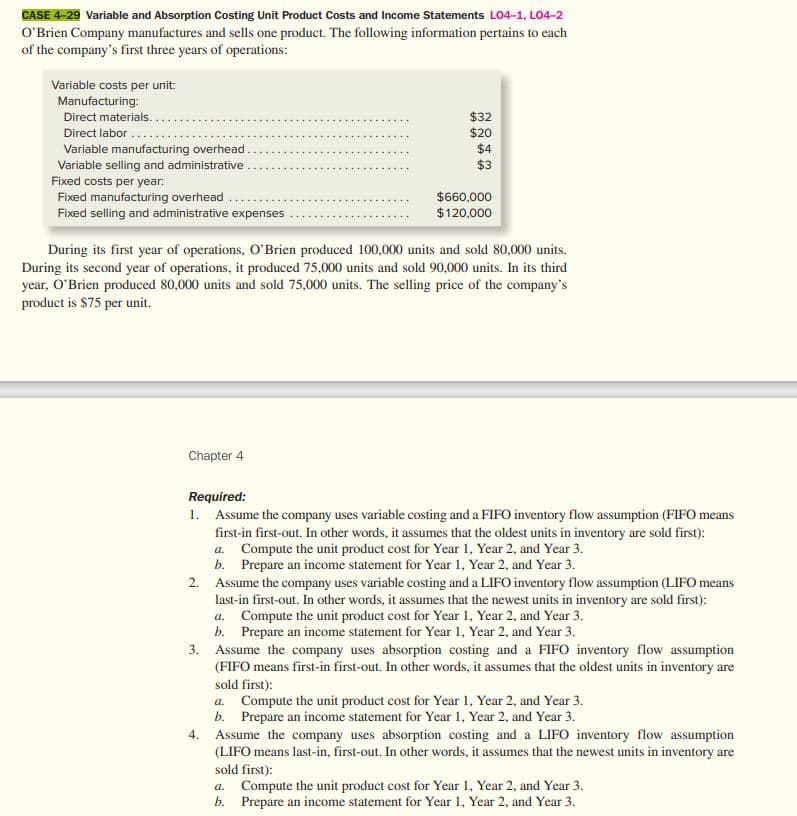1. Assume the company uses variable costing and a FIFO inventory flow assumption (FIFO means first-in first-out. In other words, it assumes that the oldest units in inventory are sold first): a. Compute the unit product cost for Year 1, Year 2, and Year 3. b. Prepare an income statement for Year 1, Year 2, and Year 3. 2. Assume the company uses variable costing and a LIFO inventory flow assumption (LIFO means last-in first-out. In other words, it assumes that the newest units in inventory are sold first): Compute the unit product cost for Year 1, Year 2, and Year 3. а.
CS_3_WR_PIR:

As per our protocol we provide solution to the one question only or to the first three sub-parts only but you have asked multiple sub-parts and questions kindly resubmit remaining questions along with specifying the question number to get the solution.
Variable costing is the costing method of valuing the product cost of the units produced during the year on which only the variable direct costs are taken into consideration in order to compute the product cost per unit.
Trending now
This is a popular solution!
Step by step
Solved in 2 steps

O’Brien Company manufactures and sells one product. The following information pertains to each of the company’s first three years of operations:
During its first year of operations, O’Brien produced 100,000 units and sold 80,000 units. During its second year of operations, it produced 75,000 units and sold 90,000 units. In its third year, O’Brien produced 80,000 units and sold 75,000 units. The selling price of the company’s product is $75 per unit.
Required:
-
Assume the company uses absorption costing and a FIFO inventory flow assumption (FIFO means first-in first-out. In other words, it assumes that the oldest units in inventory are sold first):
-
Compute the unit product cost for Year 1, Year 2, and Year 3.
-
Prepare an income statement for Year 1, Year 2, and Year 3.
-
-
Assume the company uses absorption costing and a LIFO inventory flow assumption (LIFO means last-in, first-out. In other words, it assumes that the newest units in inventory are sold first):
-
Compute the unit product cost for Year 1, Year 2, and Year 3.
-
Prepare an income statement for Year 1, Year 2, and Year 3.
-






